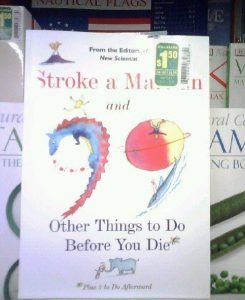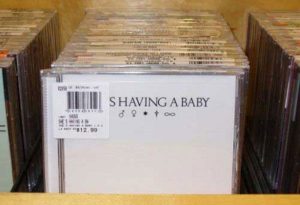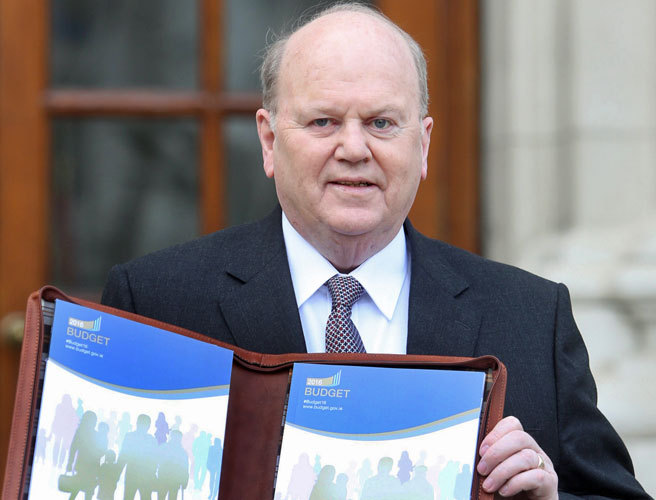Sometimes a well placed sticker can help to sell a product. Other times, well…
1.

2.

3.

4.

5.

6.

7.

8.

9.

10.

11.

12.

13.

14.

(All photos obtained from google images)

Helping our customers sell more
Sometimes a well placed sticker can help to sell a product. Other times, well…
1.

2.

3.

4.

5.

6.

7.

8.

9.

10.

11.

12.

13.

14.

(All photos obtained from google images)

The best thing about Laura Vanderkam’s productivity advice is that it doesn’t involve any major life overhauls.
In fact, it’s mostly about changing the way you think about time, and about realizing that you do have the capacity to fit in all your personal and professional priorities.
Vanderkam, who is the author of multiple books including, most recently, “I Know How She Does It,” stopped by the Business Insider office in October to talk all things time-management.
Below, I’ve highlighted seven tips on making the most of the hours available to you that really resonated with me.

Vanderkam suggests using the “X – 25” rule to figure out how much your supposedly super-busy friends are really working. If they say they log more than 75 hours a week, subtract at least 25 hours from that number. You can do the same when estimating your own work hours.
It’s not that you or your friends are deliberately trying to seem busier than you really are. Vanderkam said it’s more that, when you estimate your work hours, you’ve got in mind an image of a perfect day, when you really did log 12 or so hours straight. Most days, however, aren’t like this. You show up late; you go out for lunch with friends; you leave early to make a kid’s school play.
The important takeaway here, Vanderkam said, is that a “44-hour workweek, or even a 54-hour workweek, can make for a reasonable life.” You likely have more time for yourself and your family than you might think.
Vanderkam suggested scheduling a “power hour” first thing every morning, when you work on a top-priority task — and nothing else. It’s a time for what Vanderkam calls “real work,” or those bigger projects and tasks that help you achieve your goals and your organization’s.
If you instead start weeding through your inbox, you could find yourself still there four hours later.
A “pro-level” version of this strategy, Vanderkam said, is dedicating all of Monday morning to a bigger task that’s more speculative and requires some deep thought.

And about that inbox — stop trying to empty it. For one thing, Vanderkam said, if you treat your inbox like a to-do list, you’re essentially letting other people’s demands control your day. It’s also important to realize that most of what’s in your inbox isn’t urgent or even that important.
“There is no correlation between having an empty inbox and being successful,” Vanderkam said. In fact, part of being successful may be learning to prioritize the people and responsibilities in your life. The time you spend trying to hit inbox zero might be better spent doing the “real work” mentioned above.
There’s no reason why weekends should have to be sacred. In fact, Vanderkam said weekends can be a great time to think deeply and work on more speculative tasks, because your coworkers probably won’t be online and distracting you.
What’s more, when you spend a few hours Saturday morning and Sunday evening working, you might be able to leave a little earlier during the week — which may be especially important if you’ve got young kids to take care of.
reading a book on the couch
Set a priority for every weekday evening, such as reading part of a book.Eden, Janine and Jim/Flickr
 5. Schedule your free time to be happier
5. Schedule your free time to be happierVanderkam noticed that while we typically spend time outlining professional goals and planning our workweeks, we don’t approach our leisure time with the same mindfulness. That can result in feeling like you’ve wasted your precious free time — or in feeling like you don’t have any free time at all.
She suggested thinking, “What do I want to accomplish that’s meaningful for me and the people I care about?” and setting one priority for every weekday evening, such as reading a chapter of a novel or calling a friend.
Most of us are already checked out by the time Friday afternoon rolls around. So instead of forcing yourself to work on a big project during this time, Vanderkam recommends planning for the week ahead. Specifically, you’ll want to make a three-category priority list, with slots for work, relationships, and self.
Put two to three items in each category, then look over your calendar for the following week, and see where you can fit them in.
In “I Know How She Does It,” Vanderkam warns against falling into the “24-Hour Trap.” In other words, don’t think that the only way to achieve balance is to fit all your personal and professional priorities into a single day.
Instead, Vanderkam suggests embracing the “168-hour option,” meaning you see every hour of the week as usable time — including the weekends (see No. 4).
Vanderkam told me that some of the most successful women she spoke to thought of their lives in these 168-hour chunks. For example, one woman traveled half the week, so she figured she might as well use that time to work crazy hours. When she was home, however, she spent less time on work and more time on her relationship- and self-oriented priorities.
Thanks to Business Insider for this great article.

Rabbits Rabbits Rabbits, White Rabbits Rabbits Rabbits.
As the final sweet wrappers and being thrown away and the smell of pumpkin subsides, its onwards and upwards to the next Seasonal Celebration.
Christmas or Christmas Day is an annual festival commemorating the birth of Jesus observed most commonly on December 25 as a religious and cultural celebration among billions of people around the world. A feast central to the Christian liturgical year, it is prepared for by the season of Advent or the Nativity Fast and initiates the season of Christmastide, which historically in the West lasts twelve days and culminates on Twelfth Night; in some traditions, Christmastide includes an Octave. Christmas Day is a public holiday in many of the world’s nations, is celebrated culturally by a large number of non-Christian people, and is an integral part of the holiday season, while some Christian groups reject the celebration. In several countries, celebrating Christmas Eve on December 24 has the main focus rather than December 25, with gift-giving and sharing a traditional meal with the family. (Source: wwww.wikipedia.com)

Well this year we at Fitzpatrick Wholesale are going to make it really easy for you. Everything you will need for the Christmas season under one roof! A ONE STOP SHOP for all of your Christmas needs.
Everything from






and and of course the essentials,
So call in today or visit our online store now: www.fitzpatrickwholesale.ie (Strictly Trade Only)
 It’s that time of the year again, when we all struggle to remember if the clocks go forward or back. One way to remember is this little saying “Spring Forward, Fall Back”. So in Spring the clocks go forward and in Fall (or Autumn to you and me) they go back.
It’s that time of the year again, when we all struggle to remember if the clocks go forward or back. One way to remember is this little saying “Spring Forward, Fall Back”. So in Spring the clocks go forward and in Fall (or Autumn to you and me) they go back.
Happy Halloween from all at Fitzpatrick Wholesale.

The rule of seven simply states that your potential customers need to see or hear your message at least 7 times before it resonates with them enough that they remember you. Even though this is an old marketing concept it is still a widely respected train of thought. But why stop there…7 is the minimum number of interactions you need to have but remember to always communicate with your prospects and customers. In the age of social media advertising when brands are constantly being put on our scrolling screens, in order to stand out and be remembered you need to get a consistent message out across many different mediums. To learn more about the Rule of 7 in Marketing, here is an article from Effective Business Ideas.

1. Build a List
Whether your business is online or offline, start building a list of prospects and potential customers who give you permission to reach out to them.
Online, this is as simple as building an email newsletter. Offline, it’s as simple as having a database of your prospects’ mobile numbers, email addresses, office addresses, etc.
2. Appear Everywhere Your Prospects Are
Ensure you’re everywhere your prospects are; this includes events they attend, blogs they read, newsletters they follow, etc.
Don’t just restrict yourself to your platform; leverage other peoples’ platform to get your prospects to notice you.
3. Get Your Message Across Using Every Form of Media Possible
Use text, audio, video, images and anything else you can think of and afford to use.

4. Get Your Message Across Using Every Medium Possible
Use your website, your blog, your social media accounts, your newsletter, adverts and any other medium you can.
Conclusion
If your business relies on selling to people, you want to be everywhere they are; when they start to see you & your offer everywhere, it slowly starts to become a part of their subconscious. Desire for it gradually builds up, and they take action sooner or later.

 Halloween ,is also known as All Hallows’ Eve or All Saints’ Eve. It is a celebration observed in a number of countries on 31 October which is the eve of the Western Christian feast of All Hallows’ Day.
Halloween ,is also known as All Hallows’ Eve or All Saints’ Eve. It is a celebration observed in a number of countries on 31 October which is the eve of the Western Christian feast of All Hallows’ Day.
It is widely believed that many traditions originated from Celtic harvest festivals which may have pagan roots, particularly the Gaelic festival Samhain. This festival was Christianized as Halloween. Some academics however, support the view that Halloween began independently as a solely Christian holiday.
 Activities include trick-or-treating, attending costume parties, decorating, carving pumpkins into jack-o’-lanterns, lighting bonfires, apple bobbing and games, playing pranks, visiting haunted attractions, telling scary stories and watching horror films. In many parts of the world, the Christian religious observances of All Hallows’ Eve, including attending church services and lighting candles on the graves of the dead, remain popular, although elsewhere it is a more commercial and secular celebration. Some Christians historically abstained from meat on All Hallows’ Eve, a tradition reflected in the eating of certain foods on this vigil day, including apples, potato pancakes and soul cakes.
Activities include trick-or-treating, attending costume parties, decorating, carving pumpkins into jack-o’-lanterns, lighting bonfires, apple bobbing and games, playing pranks, visiting haunted attractions, telling scary stories and watching horror films. In many parts of the world, the Christian religious observances of All Hallows’ Eve, including attending church services and lighting candles on the graves of the dead, remain popular, although elsewhere it is a more commercial and secular celebration. Some Christians historically abstained from meat on All Hallows’ Eve, a tradition reflected in the eating of certain foods on this vigil day, including apples, potato pancakes and soul cakes.
Straddling the line between fall and winter, plenty and paucity, life and death, Halloween is a time of celebration and superstition.
(Source: https://en.wikipedia.org/)
 7 Ways the Budget will affect your SME
7 Ways the Budget will affect your SME1. Earned Income Tax Credit for Self-employed and USC Changes
In last year’s Budget, the Minister introduced an Earned Income Tax Credit of €550 for small business owners who cannot benefit from the PAYE tax credit of €1,650 available to employees. The Minister announced an increase in this credit to €950 for 2017. The three lower USC rates have been reduced by 0.5%. Accordingly, all income earners will have a lower tax burden to varying degrees. The ceiling at which the 2.5% USC rate applies is increased to €18,772 – this ensures that a full-time worker on the minimum wage will remain outside the top rates of USC.
2. Minimum Wage
The higher cost to employers arising from the increase in the hourly minimum wage from €9.15 to €9.25 will take effect from 1st January 2017.
3. Entrepreneur relief
The standard rate of capital gains tax remains at 33%. However, the Minister announced a reduction to 10% in the capital gains tax rate that applies to disposals by Entrepreneurs of qualifying assets. Entrepreneur relief offers the reduced rate of capital gains tax on the disposal by an individual of business assets up to a lifetime limit of chargeable gains of €1 million. The Minister is to review this lifetime limit in future budgets.
To qualify for the relief, the business assets which include shares in a company must have been owned by the individual for a continuous period of at least three years in the five years immediately prior to the date of disposal.
 4. Share-based remuneration
4. Share-based remuneration
Following a public consultation and review of share-based remuneration earlier this year, the Minister announced the intention to develop a new, SME, focussed share-based incentive scheme which is to be introduced in next year’s Budget.
5. Retailers and Tourism
The reduced 9% VAT rate for tourism and related activities will continue to apply. The Minister noted that the reduced rate will act as a buffer for the sector against the weakness in sterling which increases the cost of holidaying in Ireland for British tourists.
6. SMEs in the Construction and Property Sector
The Minister introduced a new ‘Help to Buy Scheme’ for first time buyers of new houses that take out a mortgage of at least 80% of the purchase price. This scheme will provide a rebate of income tax paid over the previous four years. The rebate is subject to a maximum of 5% of the purchase price of a new home up to a value of €400,000. New houses with a cost between €400,000 and €600,000 will also qualify for the scheme but the rebate is calculated at the €400,000 limit. No rebate will be paid on new house purchases in excess of €600,000. The rebate does not apply to the purchase of second hand houses.
The Home Renovation Incentive will be extended for a further two years to 31 December 2018. This measure provides income tax relief to home owners who undertake qualifying renovation works which cost a minimum of €4,405 (excluding VAT). The relief is payable over the two years following the year in which the work is carried out and equals 13.5% of the qualifying expenditure.
Landlords are entitled to deduct 75% of interest incurred on qualifying loans when computing the rental income subject to income tax. The Budget provides for an increase in the deduction to 80% of the interest incurred on qualifying loans. The deduction will be increased by 5% each year over the coming years until a 100% deduction for interest is restored.
Mortgage interest relief is to be extended beyond 2017 to 2020. Details of the extension will be set out in Budget 2018.
7. Farming
Income averaging regime allows a farmer’s taxable income to be averaged out over a five year period. A farmer facing an exceptionally poor year may “step out” of income averaging and instead pay income tax on current year income with any deferred tax liability becoming payable over subsequent years.
The flat-rate addition for farmers not registered for VAT is being increased from 5.2% to 5.4% with effect from 1st January 2017. This scheme compensates unregistered farmers for VAT incurred on costs related to their farming activities.
Farm restructuring relief provides capital gains tax relief on the sale, purchase or exchange or agricultural land. The Minister announced an extension of the relevant period for this relief to 31st December 2019.
Content Source: www.isme.ie
Picture of Michael Noonan: www.newstalk.ie
The Fitzpatrick Wholesale Halloween Cave is packed full of Boo-teautiful costumes, blood curdling decorations and devilish treats 🙂 🙂 🙂
Call in today or visit: www.fitzpatrickwholesale.ie
(Strictly Trade Only)
Governments around the world passed measures to phase out incandescent light bulbs for general lighting in favour of more energy-efficient lighting alternatives a number of years ago. Phase-out regulations effectively ban the manufacture, importation or sale of incandescent light bulbs for general lighting. The regulations would allow sale of future versions of incandescent bulbs if they are sufficiently energy efficient.*
Types of Bulbs
LED / Light / Emitting / Diode – The way of the future
Have a look at our handy guide to Bulbs-Lights-Lumens.pdf
*Source (https://en.wikipedia.org/)